- Parisa Adhami
- information
- 447 views
- 0 comments
As takes a central political and administrative center and representation of cultural achievement and empire sight, Pasargad, the capital of the Achaemenid Empire under Cyrus the Great, position in ancient Persian history. Pasargad and Persepolis, as a symbol of Persian civilization in contemporary Iran, are lasting examples of Persian engineering, architecture, creative inventiveness, and the political and religious tolerance ideals that the Achaemenid kings enhanced.
Table Of Content
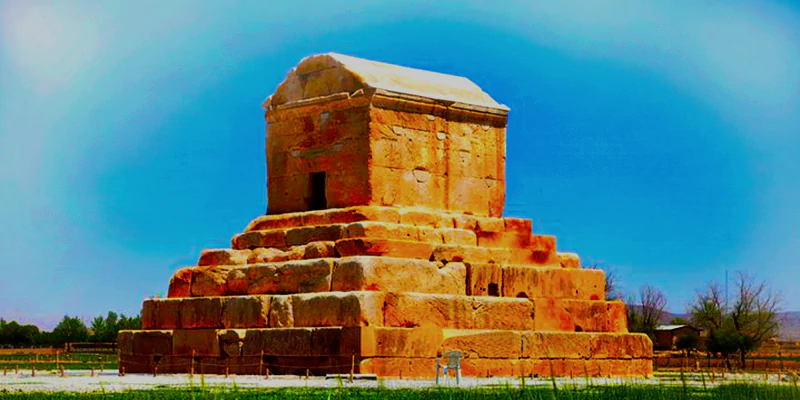
Historical and Cultural Background of Pasargad
Cyrus the Great, the founder of the Achaemenid Empire, created Pasargad in the sixth century BCE to portray his might and vision. The location in Iran's Pars region (present-day Fars Province) was selected for military and administrative reasons due to its beneficial topography and proximity to the Persian Empire's center. Following his victory over the Median king Astyages in 550 BCE, which signaled the start of the Achaemenid Empire's ascent to power, Cyrus chose Pasargad as his capital.
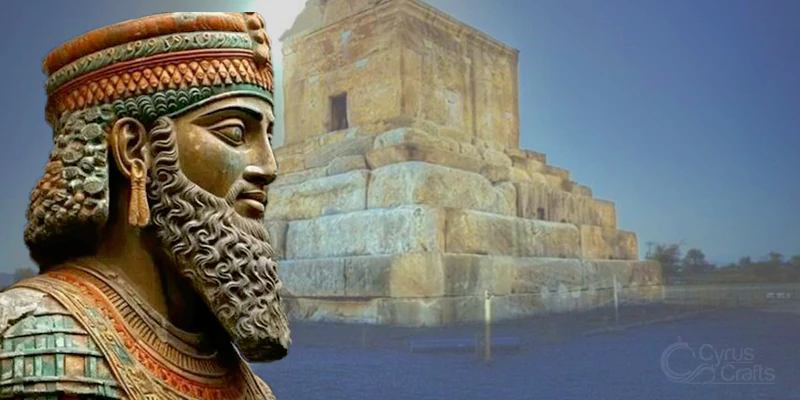
Cyrus’s reign was notable for its remarkable military successes and groundbreaking governance practices. He expanded the Achaemenid Empire into the largest political entity the world had ever seen, stretching from the Indus Valley in the east to the Mediterranean Sea in the west. His approach to leadership, which emphasized tolerance and respect for the cultures and religions of conquered peoples, was revolutionary for the time and laid the foundation for a stable and multicultural empire.
Cyrus Crafts; Luxury & Unique Products
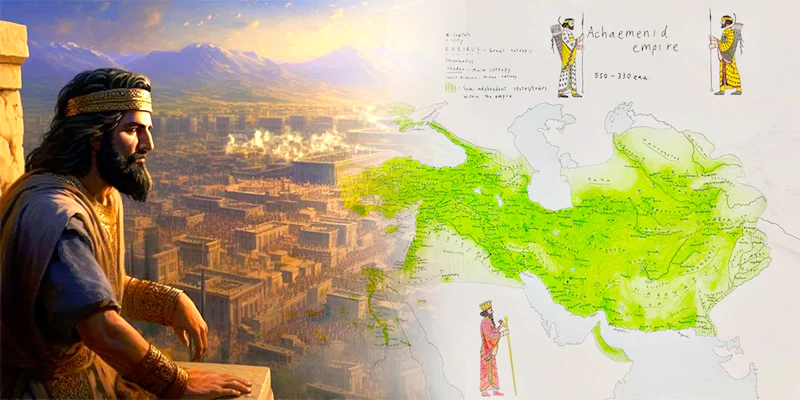
Pasargad was a center of ritual and religion and the capital of the empire. The city represented the unification of various peoples under a single ruler and the consolidation of Persian power. As a result, Pasargad reflected the philosophical and ideological goals of Cyrus and his successors, who aimed to rule by combining legal justice, cultural diplomacy, and military might. Cyrus the Great is renowned for his breakthrough religious and cultural tolerance policies and military victories.
Pasargad's varied architectural styles, incorporating elements from Mesopotamian, Anatolian, and Elamite traditions, represented this inclusiveness. This blending of styles represented the cultural diversity that characterized the Achaemenid Empire. The Cyrus Cylinder, an ancient object that many academics believe to be the first human rights authority in history, is among the most well-known examples of Cyrus's tolerance.
Written in Akkadian pictographs, the cylinder records Cyrus's conquest of Babylon in 539 BCE and his choice to permit its citizens—including the exiled Jews—to freely return to their native homelands and follow their respective religions. With this declaration, Cyrus was shown to be a king who accepted the rights of all his subjects – regardless of their racial group.
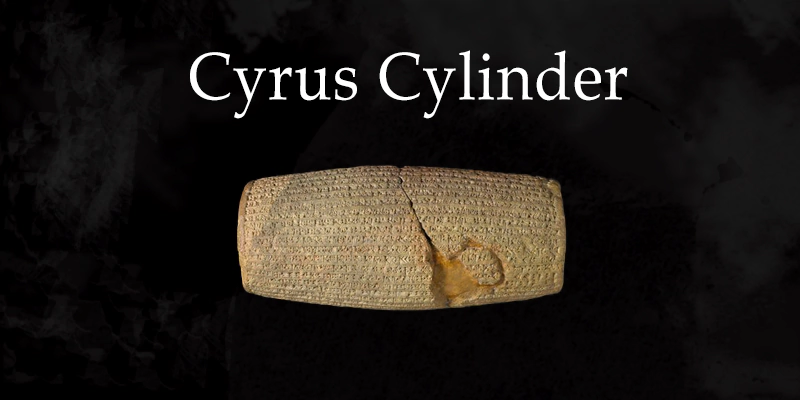
Architectural Significance of Pasargad
The structure of Pasargad, which is mixed with aspects of several Achaemenid Empire cultures, is among its most distinctive features. Cyrus's policy of tolerance and acceptance and his respect for the artistic traditions of the areas he conquered are reflected in the fusion of styles found in Pasargad's buildings.
The Tomb of Cyrus the Great
The tomb of Cyrus the Great is undoubtedly Pasargad's most recognizable construction. The tomb, which consists of a rectangular chamber with a gabled roof supported by six steps, is straightforward but magnificent. Cyrus's tomb conveys a sense of modesty and humility in contrast to the ornamented tombs of other ancient leaders, like the pyramids of Egypt. But rather than taking away from its greatness, this simplicity reflects the ascetic and practical philosophy that defined Cyrus's reign.
Influenced by earlier Elamite and Urartian tombs, the tomb's design combines Mesopotamian and Iranian architectural styles. Constructed from enormous blocks of white limestone, the building exudes permanence and power due to its elevated location on a stepped platform. As time passed, Cyrus's tomb became a popular destination for Persians and others from all over the empire who were inspired by the great leader's legacy.
The Royal Palace at Pasargad
Although now in ruins, the royal palace at Pasargad was once a grand structure that epitomized the architectural innovation of the Achaemenids. Built using a combination of stone and mudbrick, the palace complex featured columned halls, spacious courtyards, and lush gardens. The palace's design was intended to showcase the wealth and power of the Persian king while also providing a comfortable and aesthetically pleasing environment for the ruler and his court.
The Audience Hall (Apadana) in Pasargad was a significant architectural achievement designed to host formal gatherings, receptions, and diplomatic meetings. The hall was supported by tall stone columns with intricately carved capitals, and its walls were adorned with reliefs depicting the king in various ceremonial activities. These artistic embellishments conveyed the majesty and divine authority of the Persian king while also reflecting the empire’s multicultural ethos.
The Gardens of Pasargad
Formal gardens, which became a defining feature of Persian architecture, were one of Pasargad's most innovative features. Often called "paradise gardens," these carefully designed green areas represented the balance between nature and humanity. An intricate system of waterways, rivers, and streams irrigated the Pasargad gardens, allowing for the cultivating of various plants and trees in Iran's arid terrain.
Pasargad's gardens served a symbolic purpose in addition to being visually appealing. Gardens symbolized paradise—a flawless, divinely predefined state of being—in Zoroastrian tradition, significantly influencing Persian culture. The Achaemenid kings depicted themselves as earthly guardians of divine order, tasked with upholding justice and balance by integrating gardens into the royal city.
Pasargad’s Influence on Persian and Global History
Pasargad's importance goes beyond its function as the Achaemenid Empire's capital. The city—especially Cyrus's tomb—became a portrayal of Persian identity and an inspiration to succeeding dynasties. Pasargad remained significant as a cultural and historical site even after the Achaemenid Empire fell to Alexander the Great in 330 BCE.
During his visit to Pasargad, Alexander the Great reportedly commanded repairs to the tomb, which had been in poor condition for centuries, as a sign of respect for Cyrus. Alexander's regard for Cyrus reflects the Macedonian conqueror's admiration for the Persian king, whom he recognized as an example of a brilliant leader. The Hellenistic, Roman, and Islamic empires were among the other cultures whose leaders were impacted by the legacy of Cyrus and Pasargad, in addition to Persian rulers.
The Pasargad kingship idea, which strongly emphasized justice, tolerance, and the well-being of all subjects, profoundly influenced ancient political philosophy. The Achaemenid governance model impacted the administrative structures of succeeding empires, such as the Byzantine and Ottoman states, which balanced respect for regional customs and centralized authority. Pasargad is now a source of pride for Iranians, who view Cyrus the Great as one of the creators of their civilization.
The maintained Pasargad ruins, which include Cyrus' tomb and were marked a UNESCO World Heritage Site in 2004, are part of Iran's cultural heritage. Pasargad continues to attract tourists worldwide due to its architectural, historical, and symbolic significance as a depiction of Persian brilliance.
Cyruscrafts, a Dropshipping Company in Canada
As the respectful history of Cyrus the Great, who has always been a symbol of pride among Iranians, the company of CyrusCrafts was founded based on this respect and honor for human beings from any region, race, and religion. People from all over the world and with any cultural background can find their favorite items at CyrusCrafts based on their interests.
CyrusCrafts Persian market offers many premium products with the best pricing, quality guarantee, international shipping, secure payment, and safe delivery. Our service is ready to cater to people in Canada (Ontario, Alberta, British Columbia) and the United States (New York, California, Chicago, and Texas).







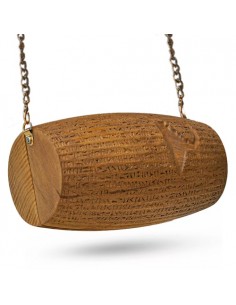

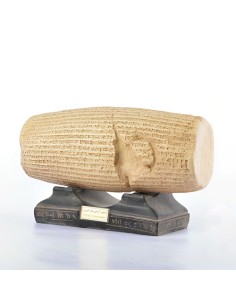

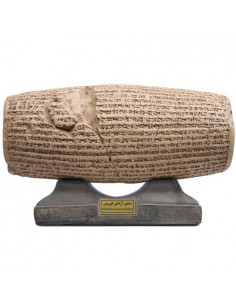

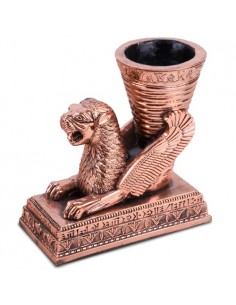


Comments (0)